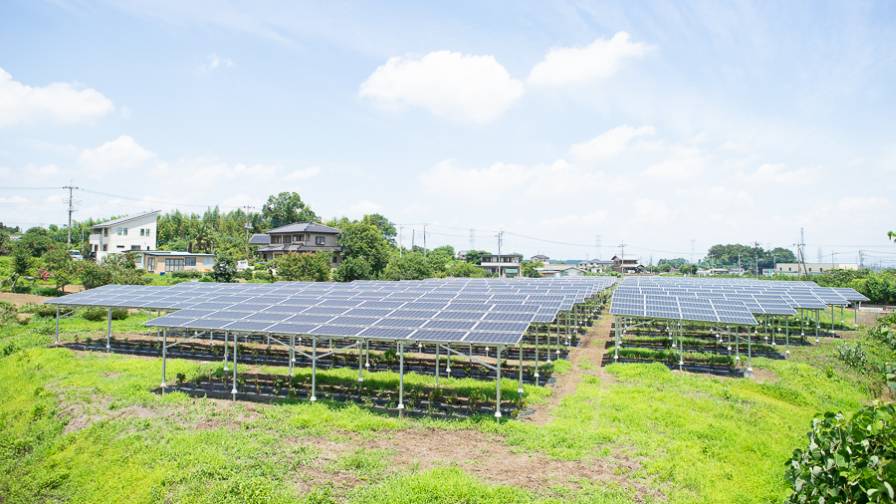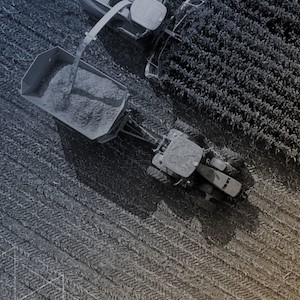Making Sense of Agrisolar in Sustainable Agriculture and Renewable Energy

The solar and ag industries can work together to make significant progress towards transforming food supplies and accelerating the transition to clean energy.
Editor’s note: Climate change impacts, the need to feed a growing global population, rising energy costs, international conflicts, and shifting government policies and subsidies, are necessitating farmers and other stakeholders to look to innovative new technologies to adapt, and prosper, in this rapidly changing market. In this feature, Ben Frank, Senior Director of National Commercial Sales, SolarEdge Technologies, discusses the growing role that agrisolar can play in helping to significantly reduce energy costs and meet clean energy targets.
Agriculture was one of the earliest industries to adopt solar photovoltaic (PV) energy. Rooftop installations on barns, sheds and other farm structures are used to generate free power for driving irrigation pumps and other critical systems or for selling to the local utility. However, agrisolar can also be used for so much more. Agri-PV, where both a PV installation and agricultural activities coexist on the same piece of land, is increasingly seen as a viable solution for sustainable land use, without being detrimental to crop yields or solar production.
Twice the harvest: dual-use farming
With about 14 GW of global capacity installed as of 2021, Agri-PV offers the means to drastically reduce electricity bills with clean, renewable energy while increasing crop yields and balancing competing land interests. Dual-use farming occurs when elevated PV systems are installed on farmland where crops are cultivated, or where livestock grazes underneath. This method, also referred to as co-locating, can yield impressive results when done correctly and using the right technology. With dual-use farming, solar modules produce electricity, while providing optimal sunshine and shade for the crops underneath, reducing heat stress and water loss. This shade is also beneficial to livestock in the heat, and can help to protect them from harsh weather in winter too.
According to a study conducted by the University of Arizona, evaporation in tomatoes, peppers, cilantro and onions was cut by 50% due to the cooler temperatures below the panels. In turn, this meant irrigation could be cut by half, and temperature conditions for workers, or livestock if present, improved, with skin temperatures recorded as 20°F cooler under the panels. Similarly, a further Arizona study found that adding solar panels helped to moderate severe climate variability, helping to protect crops from weather related damage.
Research has also found that dual use aids the energy production of photovoltaic systems. NREL found that traditional ground-mounted PV panels were substantially warmer during the day than those with the plant-based understory. The agrivoltaic panels were found to be 48°F cooler, which allowed for better performance. This allows farmers to enjoy the cost benefits of increased energy production, as well as the higher yields of their crops, or better livelihood of their grazing stock.
The right technologies for the job
One of the major challenges to successful Agri-PV lies in the effective planning of solar and agricultural projects. For the two ecosystems to work in tandem, smart, responsive PV technologies must be leveraged in order to maximize both solar energy harvesting and crop yields. That is why equipment selection is critical. As crops have individual light compensation points, and are extremely susceptible to weather, Agri-PV installations should include specialized systems to support cultivation.
Elevated solar modules can reduce the impact of hail, wind, and heavy rain while producing shade to protect crops from overexposure to the sun and keeping the soil moist. In this case, it is critical to use the correct type of solar module so as not to overexpose or underexpose the crops growing underneath. However, changing the structures of the modules, or using modules which allow more light to shine through, may diminish energy production.
For optimal results, maximizing both the crop harvest and the solar energy yield is best achieved by installing a Module Level Power Electronics (MLPE) based PV system. This is because MLPE technology, such as Power Optimizers, enables each module to produce at its maximum energy level independently, regardless of module orientation or shade / dirt exposure.
An MLPE system with Power Optimizers paired with solar trackers can further help maximize both the harvest and energy yield. Power Optimizers ensure that each module delivers the maximum amount of solar power possible. At the same time, the trackers use artificial intelligence (AI) to understand solar and agricultural seasonal patterns to tilt the modules as the sun moves in various directions throughout the day to boost power production.
Together, these key technologies allow for the optimization of both solar energy and crop growth, reducing Levelized Cost of Electricity (LCOE) and maximizing the return on investment (ROI) for the PV system owner while facilitating optimal conditions for agricultural cultivation.
In other cases, vertically mounted bifacial modules that can produce solar PV from both sides can be used to allow for more arable land. Here too, using MLPE technology with Power Optimizers, more power can be harvested from the installation. Power Optimizers can also help mitigate power losses caused by module mismatch, which is not uncommon in bifacial modules, due to reduced surface albedo (the ability of the surface to reflect sunlight) and irradiance differences on the rear side of the module caused by increased levels of dirt and shading due to the ground proximity.
Livestock as a sustainable maintenance solution
Agri-PV also provides farmers with another major benefit: additional land for grazing livestock. Ground-mounted PV systems often require mowing contracts to keep the weeds and grass from overgrowing and reducing energy production. To keep vegetation under control, livestock can be used to graze.
When correctly managed, this model provides another win-win for both parties involved, as the herds benefit from access to feed, extra shade from the modules, and additional safety from predators due to secure fencing. In turn, the PV system owners and EPC contractors benefit from grazed pastures, reduced operation and maintenance costs from mowing, additional monitoring from on-site farmers, and strengthened relationships with local communities.
Protecting the land for pollinators
The most significant threat to pollinators is climate change and habitat loss, due to human conversion of grasslands for other land use. Some studies show that solar farms can have many benefits for bee and butterfly farmers, when designed with pollinator-supporting plants such as prairie-clover or other wildflowers.
About 25% of native bee populations in the U.S. are at risk of extinction, while monarch butterfly populations have declined about 68% over the past two decades. This is leading some ground-mount PV installation owners to introduce pollinator-supporting plants, critical to our ecosystem. Planning these in conjunction with local beekeepers and conservation specialists allows them to develop habitats that research and support bee or butterfly species over long periods of time.
Maximizing harvests with the right tools
Choosing the right PV system components is critical to the success of any agrivoltaic installation. SolarEdge’s MLPE solution is ideal for agriculture as the Power Optimizers maximize renewable energy generation while its SolarGik solar trackers can improve crop yields. Having a smart PV system that can provide a combination of added benefits like module-level monitoring, remote troubleshooting, and enhanced safety features is key to maximizing power generation, increasing the lifetime revenue of the system, and improving ROI.
Through the advent of Agri-PV, the solar and agricultural industries can work together to make significant progress towards transforming food supplies and accelerating the transition to clean energy. When planned carefully, and in cooperation with local farmers, Agri-PV offers smart solution to many of the challenges we face today, and can ultimately help to create a brighter future for our planet.










